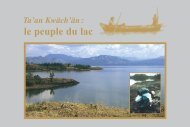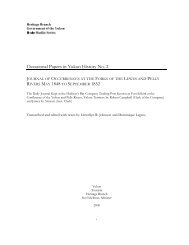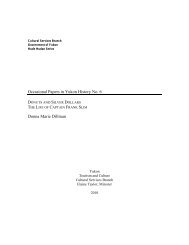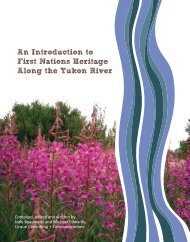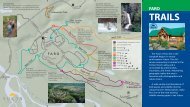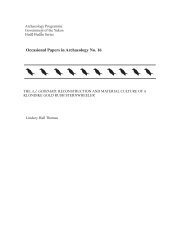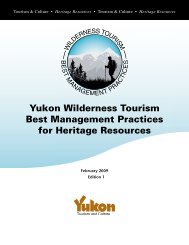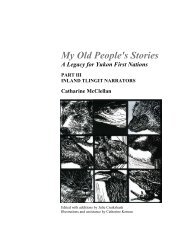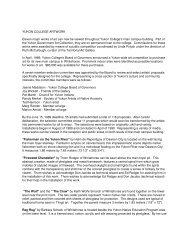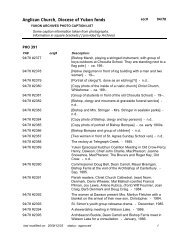Sustainable Tourism: The Tour Operators' Contribution
Sustainable Tourism: The Tour Operators' Contribution
Sustainable Tourism: The Tour Operators' Contribution
Create successful ePaper yourself
Turn your PDF publications into a flip-book with our unique Google optimized e-Paper software.
6. Cooperation with Destinations<br />
a stuNNiNg view of the huNza valley<br />
78 women have been given direct<br />
employment, 1,500 households have gained<br />
additional income and a rehabilitation centre<br />
provides work therapy for 53 disabled men;<br />
• Stone quarries in the area now employ 20<br />
people and earn an income for the Town<br />
Management Society;<br />
• A community-managed system for the daily<br />
collection and safe disposal of garbage has<br />
been implemented;<br />
• Traditional wood carving, which has a long<br />
history in northern Pakistan, has been revived with a<br />
training scheme and the creation of a wood-carving enterprise;<br />
• <strong>The</strong> environment and cultural assets are being preserved through the continued use of small gardens<br />
and fruit trees, and maintenance of the traditional irrigation and water supply; and<br />
• More than 70 small family-owned hotels provide income for local people.<br />
<strong>The</strong> successful preservation of the local environment, the area’s cultural heritage, and traditional music<br />
and dance through these programmes has inspired surrounding villages, many of which are now<br />
beginning to duplicate these efforts. TWL and its clients have benefited from the changed attitudes of<br />
local people, many of whom have gained employment or extra income from company activities in the<br />
area and now treat the company and visitors more sympathetically. Throughout the Hunza Valley, local<br />
communities have expressed their satisfaction with the work of TWL.<br />
Comments<br />
<strong>The</strong> greatest concern for TWL in establishing organised tourism in the region was the danger of<br />
degradation of traditional farmland as a result of the influx of visitors. <strong>The</strong> hillsides surrounding the bowl<br />
of Karimabad became dotted with new buildings erected on traditional terraces and centuries-old orchards.<br />
<strong>The</strong> situation has now been effectively controlled by the Town Management Society.<br />
Box 2: <strong>The</strong> Aga Khan Trust for Culture in Karimabad<br />
After the opening of the Karakorum Highway, local occupations and employment patterns began to change<br />
radically. This process was speeded up by the establishment of the Aga Khan Rural Support Programme<br />
in 1979, which led to the creation of village organisations. <strong>The</strong> new trades and occupations now supported<br />
by tourism include retail commerce, hotels and restaurants, guides and tour agents, and transportation of<br />
visitors in all-terrain vehicles and mini-buses. <strong>The</strong> Aga Khan Historic Cities Support Programme helped<br />
create the Karimabad Planning Support Services, which gave rise to a development plan that stressed<br />
orderly physical growth, the development of Karimabad and the maintenance of environmental and cultural<br />
assets. <strong>The</strong> Aga Khan Trust for Culture engaged a team to develop proposals to save Baltit Fort from further<br />
decay and to preserve the complex.<br />
<strong>Sustainable</strong> <strong><strong>Tour</strong>ism</strong>: <strong>The</strong> <strong>Tour</strong> Operators’ <strong>Contribution</strong><br />
a karimabad plaNNiNg support services sessioN




